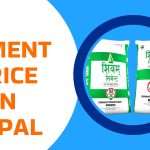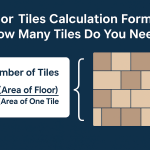Soil Stabilization brings about improvement in the stability and bearing power of soil. These changes are brought about through controlled proportion compaction and the addition of a suitable stabilizer or admixture.
What is Soil stabilization?
Soil stabilization is the process that brings about improvement in the performance of the soil subgrade or soil base.
Soil stabilization may be a procedure wherein the engineering properties of the soil are altered and enhanced to extend its suitability for construction purposes.
In engineering, stabilization may be a technique to refine and improve the engineering properties of soils like mechanical strength, permeability, compressibility, durability, and plasticity.
Physical or mechanical improvement is common but some schools of thought like better to use the term ‘stabilization’ with chemical improvements within the soil properties by adding chemical admixtures.
To improve the soil power in the road pavement to bear vehicle load stabilize the soil required.
In this topic, we can find out what is soil stabilization, types of stabilization, mechanical stabilization of soil, required material, equipment, and construction procedure. So let’s begin:
Type of Stabilization
This is a very common process of road construction that is used in almost all types of Road construction projects. Generally, stabilization is classified into two types. Which is discussed in detail below:
Mecanical Stabilization
Chemical Stabilization
Mechanical Soil Stabilization
The basic principle of mechanical stabilization is the proportioning and compaction properties of granular soils having negligible fines mixed with some binder soil like clay. Its stability and strength both improved similarly the stability of clayed soil can improve by incorporating a proper proportion of granular material in it.
Mechanical stabilization involves the utilization of physical processes.
It’s the modification of soil porosity and inter-particle friction or interlock for instance by compaction.
Unlike chemical stabilization, it changes only the physical properties of soil through compaction, soil blending (adding fibrous and non-biodegradable reinforcement), or placing a barrier on the soil.
The factors affecting mechanical stabilization
- Mechanical strength and purity of the constituent materials
- Percentage of materials and their gradation within the mix
- Degree of soil binding happening
- Mixing, rolling, and compaction procedures adopted within the field
- Environmental and climate.
- Proper proportioning of mix
- The strength of aggregate itself
- Property of soil to be mixed
- Amount of compaction.
Chemical Stabilization
Chemical Stabilization is the process of modifying the chemical properties of a substance to improve its stability, durability, and performance.
This technology is commonly used in construction, agriculture, and environmental remediation.
| Construction | improve the strength and stability of soil, making it suitable for foundations or road construction |
| Agriculture | this may involve treating soil with chemicals to adjust pH levels or increase nutrient availability for plant growth |
| Environment | chemical immobilization can be used to immobilize contaminants in soil or water, prevent their migration, and reduce environmental risks |
Techniques of soil Stabilization
Depending upon the result achieved by various stabilization techniques they can group under.
Proportioning
In this method, various soils are proportioned in a suitable proportion which gives the desired results from compaction.
Modifying agents
Lime and cement can be used for modifying the soil stabilized. Lime and cement are the main agents yo the stabilization of soil.
Cementing agent
The addition of cementing mates like lime, lime fly ash, or cement, considerably enhances the strength and stability of stabilized soils.
Waterproofing and water-repelling agents
A good stable soil may become soft and weak if water somehow gets enforced. Bituminous materials are the most commonly adopted waterproofing materials.
Water-repelling agents like vinyl resin when added to materials to stabilize, render stabilized soil waterproof.
Water retaining agents
Calcium chloride is one such compound, added to stabilized soil, that will continue to absorb moisture from the atmosphere and maintain OMC in soil.
What are the advantages of soil stabilization?
- Increasing Strength including shearing and compressive strength.
- Minimizing permeability
- Minimizing plasticity index
- Decreasing soil compressibility settlement and deformation.
- Decreasing silt and clay-size particles
- Waterproofing
- Control the dust particles
Method of soil stabilization
- Mechanical stabilization
- Bitumen stabilization
- Lime stabilization
- Cement stabilization
Construction procedure
Prepare the subgrade to correct chamber and profile sprinkler water if felt necessary on the subgrade and soil with the help of plain sources of 6-ton weights.
Aggregate and soil or fines mixed in designed proportions on a volume basis.
The Moisture Content of the mix is checked and more water is needed to mix with the materials.
Spread this mix on the prepared subgrade and compact it with the help of a plane roller.
If more than one layer is to be laid repeat the process in some way as before.
Field tests should be unducted for Moisture Content just before the compaction of the layer is to start.
what is the purpose of soil stabilization?
- Prevents soil erosion
- Improves soil strength and load-bearing capacity
- Reduces sediment runoff
- Enhances soil compaction
- Minimizes dust generation
- Supports vegetation growth
- Mitigates soil settlement and subsidence
- Increases longevity of infrastructure built on soil












